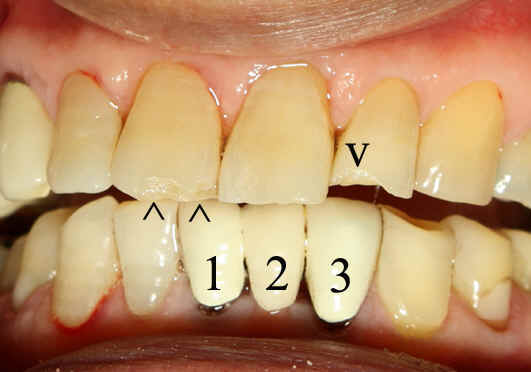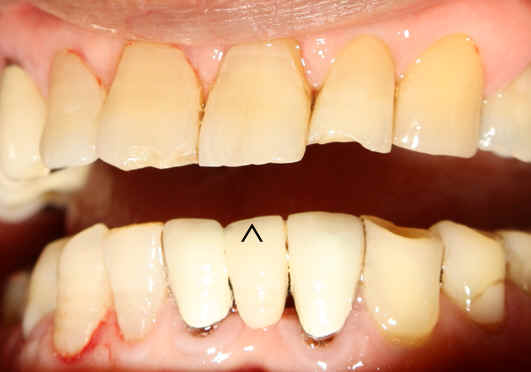 |
|
Fig.1 |
 |
|
Fig.2 |
 |
|
Fig.1 |
 |
|
Fig.2 |
Dental Education Lecture: Bad about Bridge
Mr. Tong is in his early seventies. He has had a lower front bridge for about ten years (Fig.1: 1,2,3). He lost the tooth in the middle (2). The dentist ground the teeth #1 and 3 to make a bridge. Everything appears alright. If you look carefully, there are chips involving the upper teeth corresponding to #1 and 3 (arrowheads). The outside portion of the upper front teeth appears to be unharmed yet. More interesting is that the tooth between the two chipped teeth is also ok. Why? When Mr. Tong opens his mouth slightly more, you may notice that the upper portion (the incisal edge) of the tooth #2 is lower than that of #1 or 3 (Fig.2). It seems that there is no contact between the tooth #2 and his upstairs tooth.
Our bridge and crown have porcelain on the surface for cosmetics. Porcelain is harder than our teeth. When we chew, porcelain gradually wears down our natural teeth and finally chip them.
Mr. Tong does not care about the chipped teeth in the front. But his upper bridge on your left handed side (Fig.1 and 2) wears down his bottom back teeth. The latter becomes very sensitive. He has difficult time chewing with his the back teeth.
The better option for our missing tooth nowadays is implant. By doing implant, we do not have to sacrifice and grind down the two teeth on the either side of the missing teeth. In a long term, the teeth on the opposite jaw have less chance of being worn down and chipped. In brief, implant is a better solution to missing teeth. One year later, one more bad thing happens to Mr. Tong related to his bridge in the upper right region.
Xin Wei, DDS, PhD, MS 1st edition 11/22/2009, last revision 09/28/2012